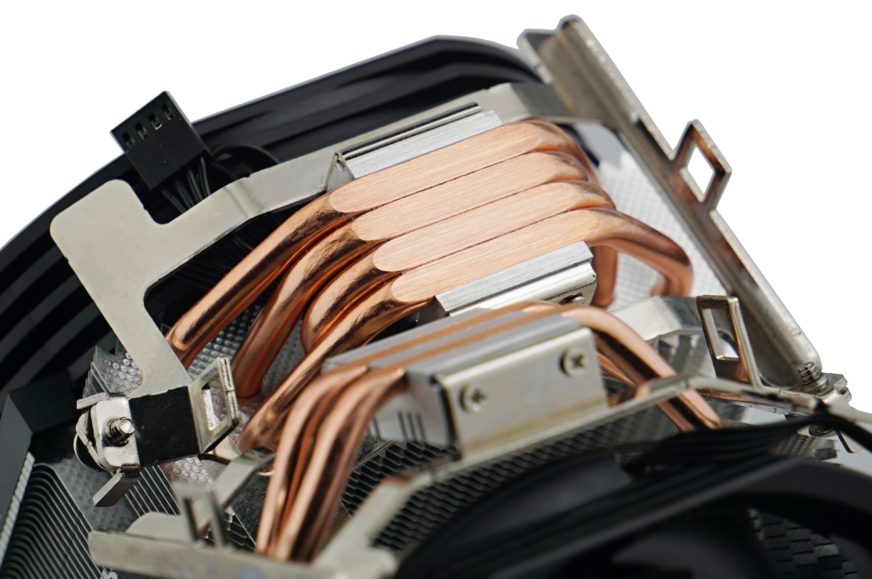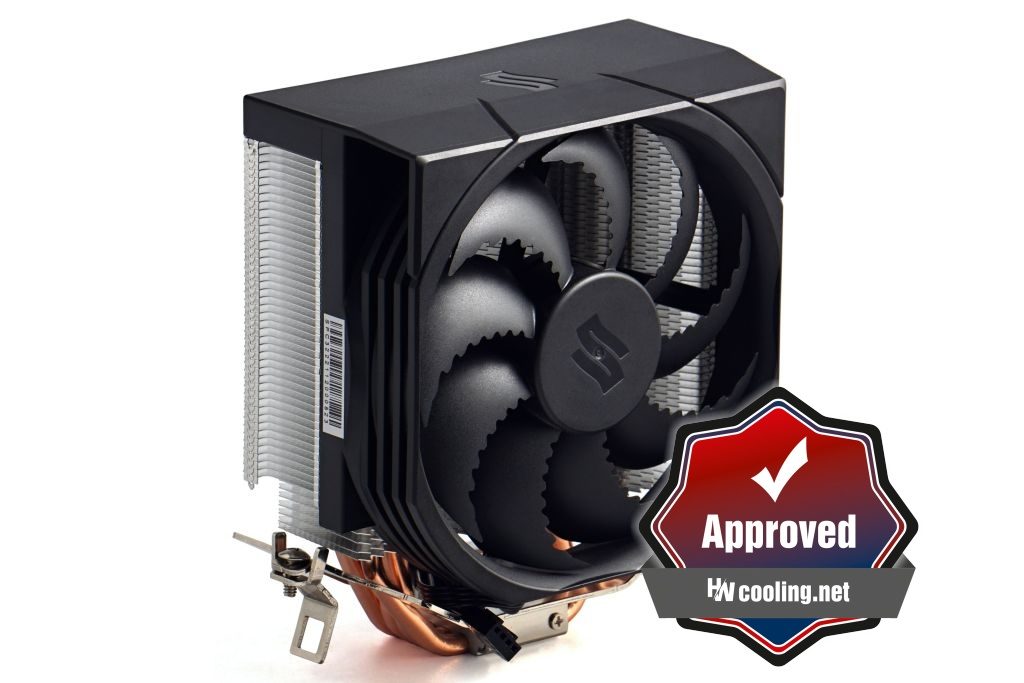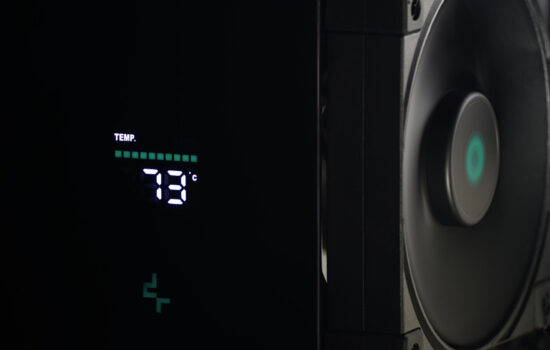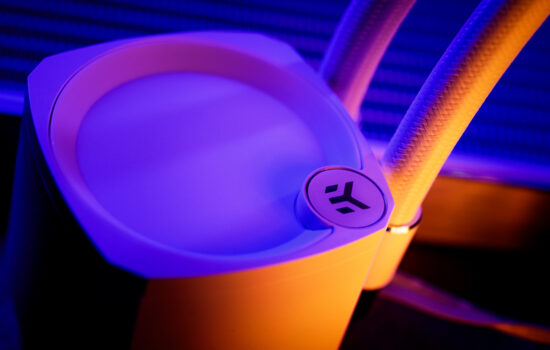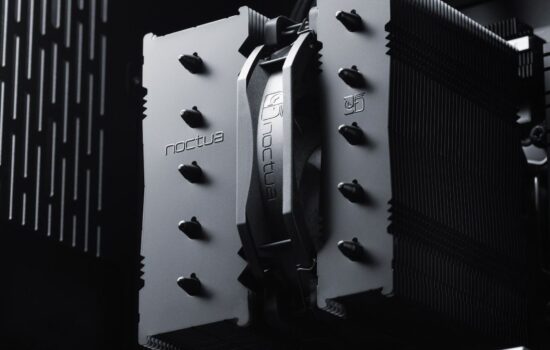Conclusion
The SilentiumPC Spartan 5 cooler with the “Max” attribute differs from, say, the basic variant only by having twice as many heatpipes. So four instead of two. The other elements are the same, so naturally the question comes to how much the two added heatpipes, which the more expensive SPC cooler has in addition, will increase the cooling efficiency. By quite a bit, or by nothing at all – depending on the processor used.
Conclusion
In a battle of direct price competitors, the Spartan 5 Max outclasses the Freezer 7 X by a landslide. At a very low noise level of 31 dBA, the SilentiumPC cooler keeps the 93 W Core i5-12400 at ~20 °C lower temperatures. It’s less so in the medium noise range (~11°C in favour of the Spartan 5 Max), but it’s still a class apart in terms of efficiency. Still, the cheaper Spartan 5 is so perfectly optimized for more low-power processors that the extra cost of the Spartan 5 Max is not worth it in many cases.
The Max variant starts to pull ahead only when the two heatpipes start to become bottlenecked. This typically happens on more powerful processors with higher operating power draw, such as the Core i5-12600K, Core i7-12700(F) in boost without power limits, or Ryzen 9, but also the 140-watt Ryzen 7 5800X after overclocking, for example. For these processors, Spartan 5 Max makes sense because it can achieve significantly higher results due to its faster heat dissipation. We’ll see how much later in tests on a more power-hungry processor than most Core i5s and Ryzen 5s (without PBO).
If the maximum power draw of the cooled processor is 100 W, which is also the case with the Ci5-12400, the 6 EUR extra charge for two Spartan 5 Max heatpipes has no justification. On the contrary, it can even be counterproductive. At very low speeds, the fact that the Spartan 5 Max has a smaller radiation area is becoming apparent. In 31 dBA mode, when the heatsink is significantly more self-reliant, the cooling performance of the Spartan 5 Max is even slightly lower than that of the simpler (and larger finned) Spartan 5 at the same noise level setting. It’s fascinating to see how tailored to mainstream processors SilentiumPC has managed to design the Spartan 5. It can only be surpassed by an even lower price.
At higher fan speeds, the Spartan 5 Max already has the upper hand, but always only symbolically. At most 1.3 °C at maximum power. With power draw aligned to the TDP (65 W) of the more efficient Intel Alder Lake processors, the difference boils down to just 0.5 °C.
A definite advantage of the Spartan 5 Max over the Spartan 5 and other coolers with “only” two heatpipes is the greater rigidity of the design. The base does not warp as easily. This comes in handy when transporting the computer, where the cooler has to cope with kinetic energy during shocks. One way or another, however, the mounting system of the Spartan 5 Max (as well as the Spartan 5 and many other coolers in this price range) is unsuitable and intense shocks can rip it out of the socket. Especially on Intel platforms where it is only connected to the motherboard via push-pins. Therefore, when a computer cannot be shipped with the cooler demounted (typically from a store to a customer), increased attention to the stuffing inside the case is required.
The SilentiumPC Spartan 5 Max cooler will be exposed to higher heat loads (~125 and 210 W) by Pavel Sekerka and we’ll see how it ranks under such conditions. If it achieves a better price/performance ratio than the Fera 5, we will gladly upgrade the “Approved” award. But for processors with power draw below 130 W and especially at low speeds, the cheaper Spartan 5 is the obvious choice.
English translation and edit by Jozef Dudáš
| SilentiumPC Spartan 5 Max |
| + Low price |
| + Attractive price/cooling performance ratio |
| + Under 100 W efficiency at the level of the larger and more expensive SilentiumPC model – Fera 5 |
| + Remarkable heatsink and fan design details for a low-end product |
| + High effectiveness even at very low speeds |
| + Lower profile, better compatibility with cases. The vast majority of coolers with a 120 mm fan are taller |
| + Easy and quick mounting |
| + Optional ARGB lighting, at extra cost |
| - Subtler installation via push-pins |
| - Virtually impossible to replace the fan |
| - Thermal paste for one installation only |
| Approximate retail price: 21 EUR |
- Contents
- The SilentiumPC Spartan 5 Max cooler in detail
- Results: Maximum performance
- Results: Higher performance (45 dBA)
- Results: Medium performance (42 dBA)
- Results: Lower noise level (39 dBA)
- Results: Low noise level (36 dBA)
- Results: Very low noise level (33 dBA)
- Results: Audibility threshold (31 dBA)
- Conclusion





